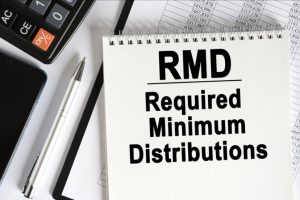 Q. I turned 70 in November 2019. I was planning on taking my first required minimum distribution (RMD) in May 2020 (when I turned 70½) until the government waived 2020 RMDs. Is my first RMD now due by May 2021? What about my wife, whose first RMD deadline would be April 1, 2021? Also, I have two IRAs and a 401(k). Must I withdraw the RMD amount from each one, or can I withdraw enough from one account to cover the total RMD amount required from all 3 accounts?
Q. I turned 70 in November 2019. I was planning on taking my first required minimum distribution (RMD) in May 2020 (when I turned 70½) until the government waived 2020 RMDs. Is my first RMD now due by May 2021? What about my wife, whose first RMD deadline would be April 1, 2021? Also, I have two IRAs and a 401(k). Must I withdraw the RMD amount from each one, or can I withdraw enough from one account to cover the total RMD amount required from all 3 accounts?
A. Due to the pandemic, required minimum distributions (RMDs)— intended to spread out a retiree’s savings, and the related taxes, over an expected lifetime — were waived in 2020. Barring any new legislation, you must resume or start RMDs in 2021.
Also, in 2020, the RMD age was raised by the SECURE Act, so those who turn 72 this year have until April 1, 2022, to take their distribution. Those older than 72 must take their RMDs by Dec. 31.
In your situation, if you turned 70 in November 2019, you were born in November 1949; so, your first RMD is due by April 1, 2022. But subsequent RMDs are due annually by Dec. 31. So, it would be sensible to take your first RMD in 2021. Otherwise, you’ll have to take two RMDs in 2022.
For those whose first RMD deadline was April 1, 2021, that deadline applied to 2020 RMDs, which are waived. Those people don’t have to take an RMD until Dec. 31, 2021. Technically, it’s their second RMD, thanks to the 2020 waiver.
RMD Advice for Retirement Income Planning
Vanguard’s Maria Bruno and others offer tips on RMDs and retirement income planning in this unusual year. Here are some things you should know:
What About IRA’s and 401(k)s?
When it comes to IRAs, the Internal Revenue Service sees your traditional individual retirement accounts as a single pool of money. You can withdraw your total RMD amount from one IRA or from any combination of IRAs.
What about the RMD from your 401(k)? You must take the first RMD from your individual retirement account by April 1 of the year after you turned 70½. But you can delay taking an RMD from the 401(k) if you’re still employed. (The deadline for first RMDs is now age 72, but only for people born after June 30, 1949.)
Learn more about RMDs and Moves You Should Consider Making with Your IRA
RMD rules have changed. It’s smart to double-check which ones apply to you. For more details on RMDs, please read my article, Understanding the Changing RMD Landscape in 2020.
Plan in Advance for Retirement
With the changing RMD landscape, the need for retirement planning and estate planning remains as important as ever. If you have not done your Estate Planning or Retirement Planning or had your Planning documents and Retirement Plan reviewed in the past several years, please don’t hesitate to call us foran initial consultation, or a free annual review for members of our Lifetime Protection Plan®:
Estate Planning Fairfax: 703-691-1888
Estate Planning Fredericksburg: 540-479-1435
Estate Planning Rockville: 301-519-8041
Estate Planning DC: 202-587-2797












